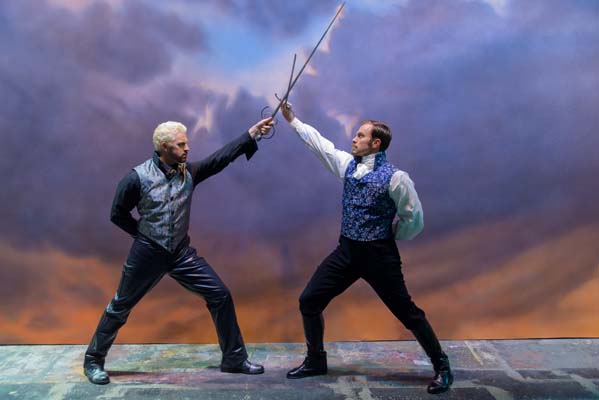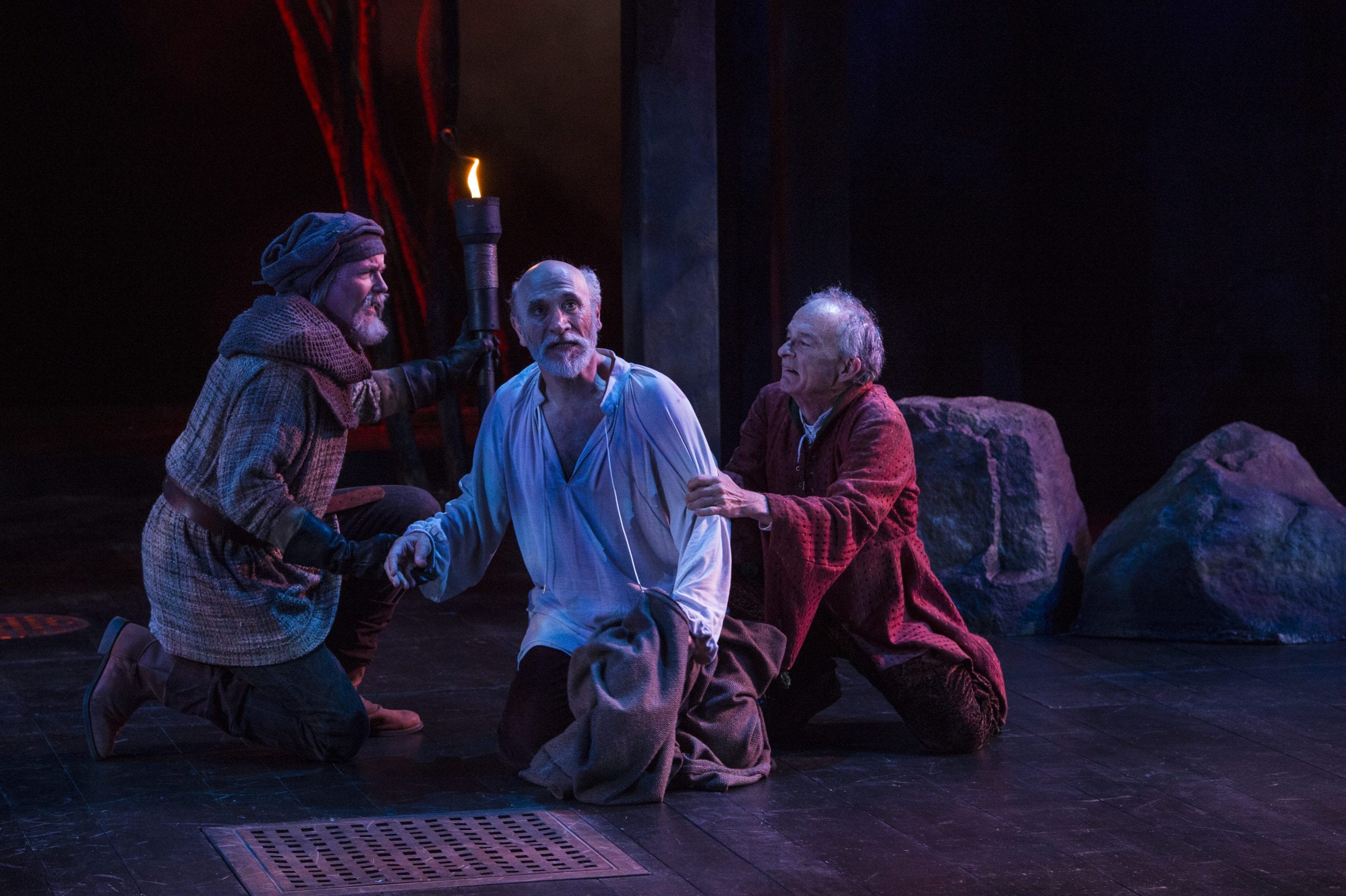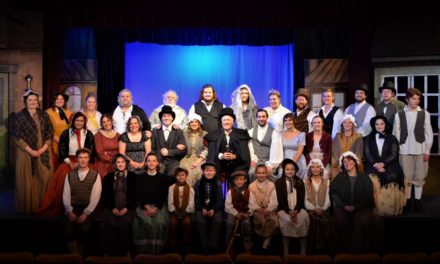SALT LAKE CITY — Like any good story, The Count of Monte Cristo has something for everyone: a love story, swashbuckling pirates, friendship, betrayal, forgiveness, and even a jailbreak. All this, plus singing and dancing, are on the Pioneer Theatre Company stage this month in the new musical adaptation of the classic novel by Alexandre Dumas.

Show closes May 21, 2016.
The Count of Monte Cristo, a musical adaptation with music by Frank Wildhorn and a book and lyrics by Jack Murphy, tells the story of the wrongfully imprisoned Edmund Dantes. After two decades of confinement, Edmund escapes and uses a secret treasure to transform himself into the Count of Monte Cristo. With this new identity, Edmund plots revenge on the men who cost him his freedom, his family, and his faith in humanity.
Matt Farcher has the challenge of playing the title character in this production. Whether Edmund was a happy newlywed, a prisoner, a swordfighter, or a methodical schemer, Farcher was able to transform his demeanor and affect to match the needs of the script. Farcher’s strongest moments were when he was pleading for Abbé Faria to live and in the second act when he reunites with his wife, Mercedes. Farcher also has a strong voice that satisfies the demands of the score, though his delivery of “Hell to Your Doorstep” and “The Man I Used to Be” lacked the emotional power that these songs could have.

Matt Farcher as Edmund Dantes. Photo by Alexander Weisman.
The strongest of the 23 cast members was Briana Carlson-Goodman in the role of Mercedes. Every moment Carlson-Goodman was on stage was drenched in emotion, from the longing she exhibited in “When the World Was Mine” to the festering bitterness in her scenes with Mercedes’s second husband, Fernand Mondego. Carlson-Goodman’s best performance, though, came in “All This Time,” which was so forceful and emotional that it could serve as a master class for future actors on how to perform a “stand and deliver” song.
Another standout in the cast was Dathan B. Williams as the Abbé Faria, a fellow prisoner of Edmund Dantes. Williams brought some lightheartedness to the first act, which would be at risk of becoming a very depressing beginning, when Edmund experiences repeated setbacks. Williams’s slight kookiness was endearing and made it easy to see why Edmund befriended the Abbé Faria. As Fernand Mondego (Edmund’s archnemesis, who steals Mercedes from him), Darren Ritchie served as a truly malevolent rival in the play. Ritchie also gave Mondego a seedy sensualness that made the character’s infidelities especially believable and despicable.

Matt Farcher as Edmund Dantes and Briana Carlson-Goodman as Mercedes. Photo by Matt Farcher as Edmund Dantes. Photo by Alexander Weisman.
Despite these—and other—strong performances, The Count of Monte Cristo falters because of directorial missteps from Marcia Milgrom Dodge. One perplexing choice was to make Edmund stand stiffly in place for long stretches of the second act. Perhaps this was Dodge’s effort to make Edmund seem in charge or to give him contrasting body language from the beginning of the play. But it instead resulted in Edmund looking like a singing action figure. (The modern, shiny leather pants that costume designer Angela Wendt gave to Farcher in the second act certainly contributed to the plastic appearance.) Dodge also used slow motion in at least three different scenes in the first act. Slow motion is rarely (if ever) a good directorial choice in live theatre because it usually looks hokey and never seems as real as it does in film. The slow motion in The Count of Monte Cristo was no exception to these general rules. There was also a bizarrely staged postmortem appearance of Abbé Faria during a climactic moment in the second act.
But it was not just physical choices that resulted in disappointing direction. Although the performances from the leading cast members were nice, what was sorely lacking was the interpersonal relationships among most of the characters. Because The Count of Monte Cristo is such an emotionally driven story, the reasons behind these emotions must be clear. There was never enough jealousy from the antagonists, Fernand Mondego, Monsieur Danglars (played by Brandon Contreras), and Prosecutor Villefort (played by John Schiappa), to justify their depraved actions towards Edmund. The father-son relationships that Edmund had with his father and his son were emotionally empty. The friendship that Edmund had with Jacopo (played by Paul-Jordan Jansen) was artificial and forced. Indeed, the only believable relationships on the stage were between Mercedes and Edmund and between Mercedes and Fernand Mondego.

Matt Farcher as Edmund Dantes and Darren Ritchie as Fernand Mondego. Photo by Matt Farcher as Edmund Dantes. Photo by Alexander Weisman.
In addition to directorial problems, there were also problems with this production’s technical designs. In addition to Wendt’s decision to use modern leather pants in a period show, she also chose to give the female pirates garish costumes that looked like a technicolor version of the “lovely ladies” of Les Misérables. Generally, Wendt’s costumes were best when they appeared most historically authentic (such as the flattering waistcoats and delightful empire waist dresses in the wedding scene). The play also suffered from Paul Miller’s decision to light many of the scenes dimly, which made the theater feel like a dark cave for long stretches of the show. Finally, Christopher Duval’s fight choreography had some nice touches, but the sword-fight at the climax of the production lacked spontaneity and felt repetitive.
Despite its flaws, The Count of Monte Cristo is—as I have said in a previous review—one of Wildhorn’s stronger plays. There are some fine moments in Pioneer Theatre Company’s production, and every leading cast member gives a memorable performance. Although artistic choices make this production less fulfilling than it can be, it is still a worthy finish to Pioneer Theatre Company’s successful season and a nice introduction to a classic novel.






